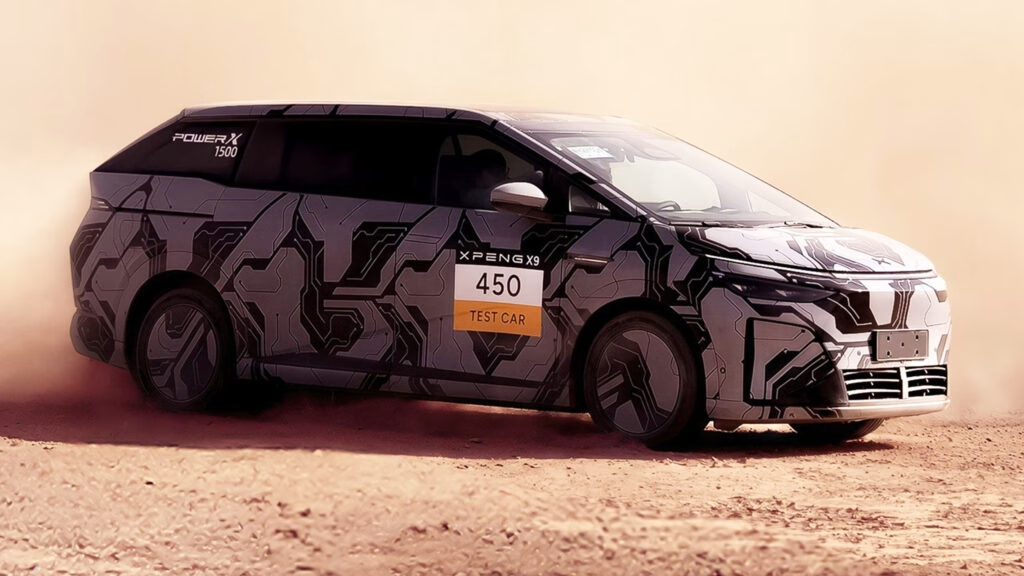Why Is Xpeng Adding Hybrid Tech to Its EV Lineup?
Xpeng has built its reputation in China as a forward-thinking electric vehicle maker, but even the most innovative brands have to keep their ears to the ground. The reality? Not every driver is ready to go fully electric, especially in regions where charging infrastructure is still catching up. That’s why Xpeng is now retrofitting several of its popular EVs—including the X9 minivan—with range-extended hybrid powertrains. It’s a move that speaks volumes about where the market is heading: flexibility is king, and hybrids are the bridge many drivers want right now.
What Makes the Xpeng X9 EREV Stand Out Among Hybrids?
Let’s get straight to the numbers. The X9 EREV is packing a massive 63.3 kWh battery—one of the largest you’ll find in any hybrid today, only trailing the optional 70 kWh battery in Zeekr’s new 9X plug-in hybrid. That’s not just a spec-sheet flex; it translates to a real-world electric-only range of about 280 miles (450 km) on China’s CLTC test cycle. For context, that’s enough to cover most families’ weekly commutes and errands without ever firing up the gas engine.
But Xpeng didn’t stop there. The X9 EREV also features a 1.5-liter turbocharged engine rated at 148 horsepower. Together, the battery and engine deliver a jaw-dropping total range of up to 994 miles (1,600 km) before you need to refuel or recharge. That’s the kind of number that makes range anxiety a thing of the past—even for road trip warriors.
How Does the X9 EREV’s Platform Enable This Hybrid Leap?
Under the skin, the X9 EREV rides on Xpeng’s SEPA 3.0 platform, also known as Kunpeng AI. This isn’t just a fancy name—it’s a modular architecture designed to make adding hybrid tech to existing EVs almost plug-and-play. Instead of starting from scratch, Xpeng can retrofit proven electric models with a range-extender system, saving time and cost while delivering more options to buyers.
This approach is catching on across the industry. According to a 2023 report from the International Energy Agency, plug-in hybrids and range-extended EVs are expected to account for nearly 30% of new vehicle sales in China by 2026, as consumers seek the best of both worlds: electric efficiency for daily drives and gasoline backup for longer hauls.
How Does the X9 EREV Perform in Real-World Conditions?
Specs are great, but how does the X9 EREV hold up when the rubber meets the road—or, in this case, the sand? Xpeng has put its new hybrid minivan through the wringer, testing it in some of China’s harshest environments, including sandy deserts and extreme climates. The company claims the X9 EREV has been tested in 19 countries and 330 cities worldwide, a sign they’re serious about global readiness.
This kind of rigorous testing isn’t just for show. It means families can count on the X9 EREV whether they’re navigating city streets, tackling mountain highways, or braving unpredictable weather. With a curb weight of 2,750 kg (over 6,000 lbs) and dimensions that make it slightly larger than its all-electric sibling, the X9 EREV is built for comfort, space, and long-distance reliability.
What’s Still Unknown About the X9 EREV?
While Xpeng has shared plenty about the battery and engine, some details remain under wraps. The exact output of the electric motor, as well as the combined power and torque figures when the engine and motor work together, haven’t been disclosed yet. These numbers will be crucial for buyers who care about acceleration, towing, or just want to know how the X9 EREV stacks up against rivals.
Pricing and availability are also still a mystery, though Xpeng has promised more information closer to the vehicle’s official launch in the fourth quarter of this year. Given the specs and the brand’s positioning, industry analysts expect the X9 EREV to be competitively priced—likely undercutting many Western rivals with similar range and tech.
How Does the X9 EREV Fit Into the Bigger Picture of Hybrid and EV Adoption?
The Xpeng X9 EREV isn’t just another hybrid—it’s a sign of where the auto industry is heading. As battery tech improves and charging networks expand, pure EVs will become the norm. But for now, hybrids and range-extenders are the practical choice for millions of drivers who want flexibility without compromise.
A recent study from McKinsey & Company found that 56% of Chinese consumers considering a new car in 2024 are looking at hybrids or plug-in hybrids, citing concerns about charging access and long-distance travel. Xpeng’s move to retrofit its EVs with hybrid systems is a direct response to this demand, and it’s likely other automakers will follow suit.
What’s the Real-World Impact for Drivers and Families?
For families, the X9 EREV could be a game-changer. Imagine a minivan that handles the daily school run, weekend getaways, and even cross-country road trips—all without the stress of finding a charger or worrying about running out of juice. The electric-only range covers most urban needs, while the gas engine steps in for the long haul. It’s a practical solution that doesn’t force drivers to choose between sustainability and convenience.
The big takeaway? The future of driving isn’t about perfection—it’s about smarter adjustments. Start with one change this week, whether it’s learning more about hybrids or test-driving a range-extended EV, and you’ll likely spot the difference by month’s end.

